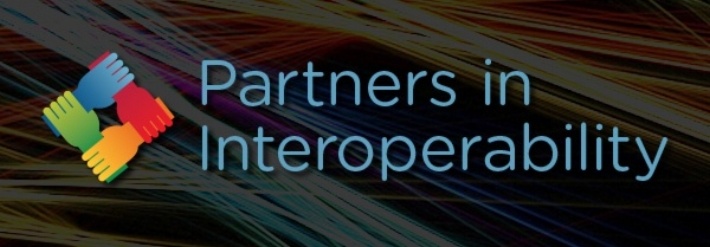The Spectrum of Interoperability
In a world of polychromatic nuance, it’s interesting to see how often some individuals try to see things in black and white. This tendency also seems to apply to healthcare data interoperability, as if any given product, organization or service can be classified as either “interoperable” or not. To me it’s absolutely clear that interoperability is a spectrum, which can only be aspired to as a matter of degree.
Any given player may be viewed as more or less interoperable, but not wholly interoperable, because we live in such a heterogeneous world, with science and medicine continuously evolving. But no matter how you might personally think of interoperability, we can probably all agree that we still have a long, long way to go before we get there.
This is why we need events like Partners in Interoperability. To achieve real progress, we must engage major stakeholders to stop and listen for awhile, and roll up their sleeves to make small incremental steps to move along that spectrum from the cold blue reality of the recent past to a warm, FHIR-y future based on improved interoperability.
Partners in Interoperability October Meeting
The second Partners in Interoperability meeting was held at the Johns Hopkins Mt. Washington Conference Center in Baltimore on Oct. 18-19, an arcadian space conducive to deep thought. As before, the meeting included a set of opening talks each day followed by breakouts focusing on the particular challenges of using FHIR among three distinct business communities: Clinicians, Payers and Biopharma.
Day 1
The meeting opened with a welcome from Dr. Christopher Chute, a long-time thought leader in the world of health data standards. Dr. Chute evoked the history of the Great Baltimore Fire of 1904, which even predates the last Chicago Cubs championship, and led to the establishment of national standards for fire hose fittings. The metaphor of a great fire being a pivotal event that burned down the old to create a new and improved place did not go unnoticed by the 60+ attendees at the event.
Next was a fast-paced set of five short insights on what FHIR means to the three represented communities, the health IT industry, and, above all, to the future of interoperability which we all aspire toward.
The morning concluded with three lively presentations on FHIR’s promise and reality:
- Micky Tripathi gave an update on the Argonaut Project, which is close to completing its implementation guides for using the FHIR API and is already thinking about what to tackle next
- Ricky Bloomfield, MD gave an exciting visual talk on how FHIR is enabling several mobile apps to enhance patient care and interaction at Duke University’s Health System
- Sean Khozin, MD, presented on how the FDA is reinventing itself to capitalize on real world evidence from EHRs as well as multiomics big data sources – portraying several opportunity areas where FHIR can help advance the FDA’s mission.
Day 2
The second morning included recaps from each of the breakouts, followed by one more set of plenary presentations:
- Avinash Shanbhag of ONC discussed the importance of FHIR to realize the goals of the next phase of Meaningful Use
- Titus Schleyer, PhD, of the Regenstrief Institute painted the vision that health information should flow like water, and demoed a FHIR app that allows patients to collect all their medication data from disparate health IT systems into one unified list
- The legendary Dr. Clem McDonald discussed and demonstrated an intriguing JSON-based forms generation toolset used by the National Library of Medicine that can be used, for example, with the Surgeon General’s Family Health History form.



